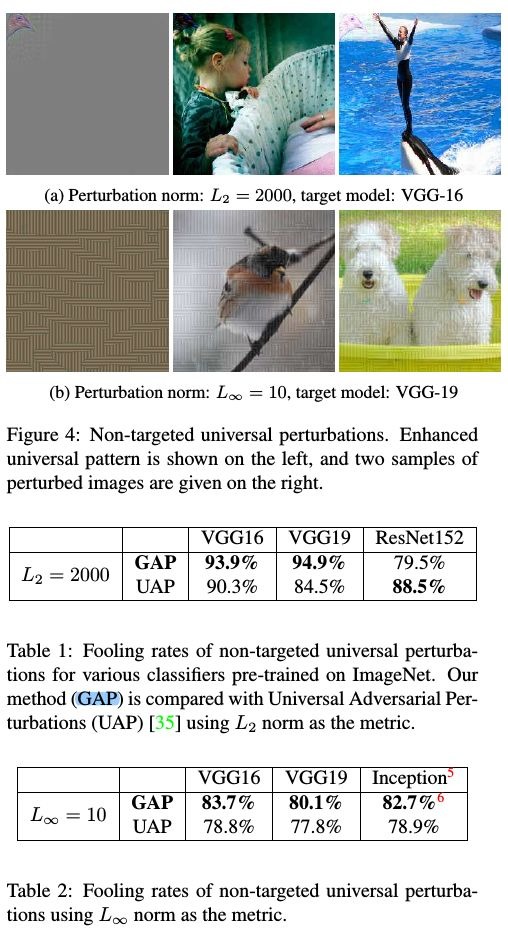Keyword [Universal Adversarial Perturbations]
Poursaeed O, Katsman I, Gao B, et al. Generative adversarial perturbations[C]//Proceedings of the IEEE Conference on Computer Vision and Pattern Recognition. 2018: 4422-4431.
1. Overview
In this paper, it proposed generative models for creating adversarial examples
- can produce image-agnostic and image-dependent perturbation for targeted and untargeted attacks
- demonstrate that similar architecture can achive impressive results in fooling both classification and semantic segmentation models
- faster than iterative methods at inference time
1.1. Type of perturbation
- Universal. fixed
- Image-dependent. vary for different images
- targeted
- untargeted
1.2. Contribution
- unifying framework. universal and image-dependent
- state-of-art performance in universal perturbations
- first to present effective targeted universal perturbation
- faster than iterative and optimization-based methods, the order of milliseconds
1.3. Related Work
1.3.1. Universal Perturbations
- iterates over samples in a target set, aggregate image-dependent perturbation and normalize the results to build universal perturbation
- add image-dependent perturbations and clip the results
1.3.2. Image-dependent Perturbation
- optimization-based
- FGSM
- Iterative Least-Likely Class
- adversarial examples are sensitive to the angle and distance
2. Generative Adversarial Perturbation
2.1. Universal Perturbation

U. scale to have a fixed norm

trained with fooling loss. the combination of fooling and discriminatice loss lead to sub-optimal

2.2. Image-dependent Perturbation


- generate perturbation instead of adversarial example giving us better control over the perturbation magnitude
2.3. Fooling Multiple Network


3. Experiments

- L_{oo}. make use of the maximum permissible magnitude at each pixel